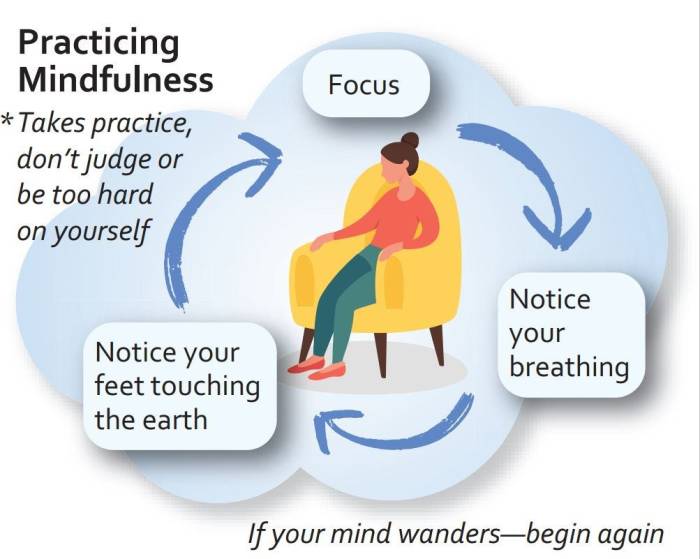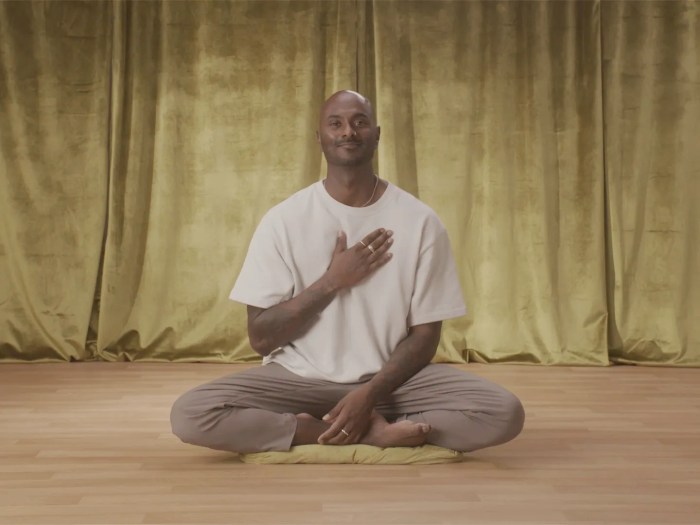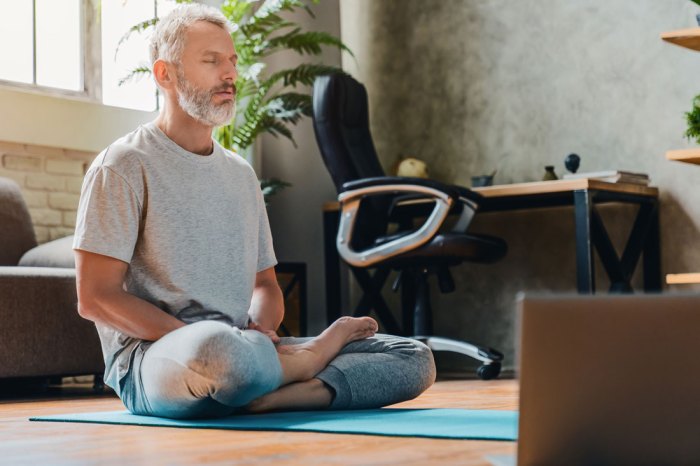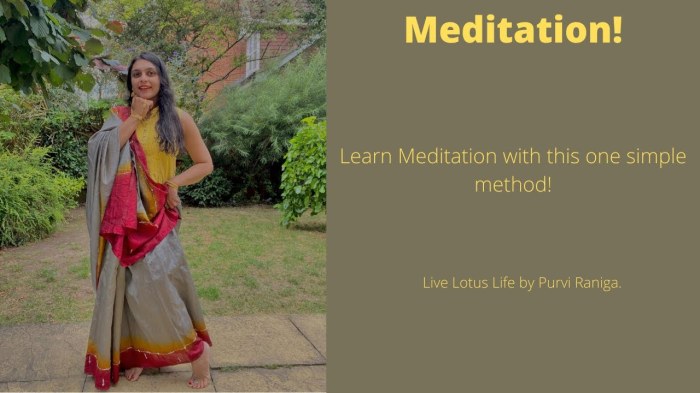Delving into 8 Meditation Techniques for Self-Improvement, this introduction immerses readers in a unique and compelling narrative. Discover the transformative power of meditation in enhancing your overall well-being.
Explore various meditation practices that can positively impact your mental, emotional, and physical health, leading to a more fulfilling life.
Introduction to Meditation Techniques
Meditation is a practice that involves focusing the mind to achieve a state of mental clarity and emotional calmness. It has been used for centuries as a tool for self-improvement, helping individuals develop a deeper sense of self-awareness and inner peace. The importance of meditation for self-improvement lies in its ability to reduce stress, increase concentration, and promote overall well-being.
Benefits of Meditation for Mental and Physical Well-Being
- Mental Clarity: Meditation helps clear the mind of cluttered thoughts, allowing for better decision-making and problem-solving.
- Emotional Regulation: By practicing meditation, individuals can learn to manage their emotions more effectively, leading to improved relationships and overall mental health.
- Stress Reduction: Regular meditation practice has been shown to lower cortisol levels, the stress hormone, thereby reducing the negative impact of stress on the body.
- Improved Sleep: Meditation can help individuals achieve a more restful and rejuvenating sleep, leading to better overall health and well-being.
Impact of Meditation on Daily Life
- Increased Focus: Meditation can enhance concentration and attention span, allowing individuals to be more productive and efficient in their daily tasks.
- Enhanced Creativity: By quieting the mind through meditation, individuals can tap into their creative potential and come up with innovative solutions to challenges.
- Emotional Resilience: Regular meditation practice can build emotional resilience, enabling individuals to bounce back from setbacks and adversities more easily.
- Greater Self-Awareness: Meditation helps individuals connect with their inner selves, fostering self-discovery and personal growth.
Mindfulness Meditation
Mindfulness meditation is a practice that involves focusing your mind on the present moment, acknowledging and accepting your thoughts, feelings, and bodily sensations without judgment. It is about being fully aware of what is happening within and around you, cultivating a sense of calm and clarity.
Steps to Practice Mindfulness Meditation:
- Find a quiet and comfortable place to sit or lie down.
- Close your eyes and focus on your breath. Notice the sensation of each inhale and exhale.
- Pay attention to any thoughts, emotions, or sensations that arise without getting caught up in them.
- If your mind wanders, gently bring your focus back to your breath or a specific anchor point.
- Continue this practice for a few minutes to start and gradually increase the duration as you feel more comfortable.
Benefits of Mindfulness Meditation:
- Reduces stress and anxiety by promoting relaxation and emotional regulation.
- Enhances self-awareness and introspection, leading to better decision-making and problem-solving skills.
- Improves focus and concentration by training the mind to be present and attentive.
- Promotes overall well-being and mental health, fostering a positive outlook on life.
Loving-Kindness Meditation

Loving-Kindness Meditation, also known as Metta Bhavana, is a meditation practice that involves cultivating feelings of love, compassion, and goodwill towards oneself and others. The purpose of this meditation technique in self-improvement is to foster a sense of empathy, kindness, and interconnectedness with all beings.
Benefits of Loving-Kindness Meditation
- Loving-Kindness Meditation helps reduce stress and anxiety by promoting feelings of love and compassion, which in turn can improve overall mental well-being.
- By practicing loving-kindness towards oneself, individuals can enhance self-acceptance, self-esteem, and self-confidence.
- Developing compassion through this meditation technique can lead to improved relationships with others, as it encourages empathetic understanding and forgiveness.
- Regular practice of loving-kindness meditation can enhance emotional intelligence, empathy, and overall resilience in facing life’s challenges.
Enhancing Relationships Through Loving-Kindness Meditation
Loving-Kindness Meditation can have a profound impact on relationships with oneself and others. By cultivating feelings of love and compassion, individuals can create a positive ripple effect in their interactions with the world around them. For example:
- Practicing loving-kindness towards oneself can help individuals develop a deeper sense of self-love and acceptance, leading to healthier self-image and improved mental well-being.
- Extending loving-kindness towards others can foster empathy, understanding, and forgiveness, strengthening interpersonal relationships and promoting harmony in social interactions.
- By including all beings in the practice of loving-kindness meditation, individuals can cultivate a sense of interconnectedness and unity with the world, promoting a broader perspective and a more compassionate approach to life.
Body Scan Meditation

Body scan meditation is a mindfulness practice that involves focusing on different parts of the body, one at a time, to bring awareness to physical sensations, tension, and emotions. This technique can help individuals become more attuned to their bodies and promote relaxation, stress reduction, and self-awareness.
Guide to Practicing Body Scan Meditation
- Find a quiet and comfortable space to lie down or sit in a relaxed position.
- Close your eyes and bring your attention to your breath, taking a few deep breaths to center yourself.
- Starting from your toes, slowly scan each part of your body, paying attention to any sensations you may feel without judgment.
- Notice any areas of tension or discomfort, and try to release any tightness by breathing into those areas.
- Continue moving up through your legs, torso, arms, neck, and head, scanning each part with curiosity and acceptance.
- Take your time and be gentle with yourself throughout the practice.
- After completing the full body scan, take a few moments to reflect on how your body feels as a whole.
Benefits of Body Scan Meditation
- Increases self-awareness: By focusing on different body parts, individuals can become more in tune with physical sensations, emotions, and areas of tension.
- Promotes relaxation: The practice of body scan meditation can help release physical and mental tension, leading to a sense of calm and relaxation.
- Reduces stress and anxiety: By bringing awareness to the body and letting go of tension, individuals can alleviate stress and anxiety symptoms.
- Enhances mind-body connection: Body scan meditation helps strengthen the connection between the mind and body, fostering a deeper understanding of how emotions manifest physically.
Transcendental Meditation
Transcendental Meditation (TM) is a technique that involves sitting comfortably with closed eyes and silently repeating a mantra. It is a form of silent mantra meditation that aims to transcend thought and experience a state of pure awareness.
Benefits of Transcendental Meditation
- Reduces Stress: TM has been found to reduce levels of stress hormones in the body, promoting a sense of calm and relaxation.
- Enhances Clarity of Mind: Regular practice of TM has been shown to enhance mental clarity, focus, and cognitive function.
- Promotes Personal Growth: Many individuals who practice TM report experiencing personal growth in terms of increased self-awareness, creativity, and emotional resilience.
Guided Visualization Meditation

Guided visualization meditation is a technique where an individual is led through a series of mental images or scenarios to create a sense of relaxation, focus, and positive change. This form of meditation can be a powerful tool for self-improvement as it helps in manifesting goals, reducing stress, and enhancing overall well-being.
Creating a Peaceful and Immersive Visualization Experience
- Find a quiet and comfortable space where you can relax without distractions.
- Choose a specific goal or intention for your visualization practice.
- Close your eyes and imagine vivid details of your desired outcome or scenario.
- Engage all your senses by visualizing colors, sounds, scents, textures, and emotions related to your visualization.
- Stay focused and present throughout the practice, allowing yourself to fully immerse in the experience.
- Avoid judgment or doubt, and trust in the power of your mind to create positive changes.
Positive Changes through Guided Visualization
Guided visualization meditation has been used by many individuals to bring about positive transformations in their lives. For example, athletes often use visualization techniques to enhance their performance by mentally rehearsing their success. Additionally, individuals seeking personal growth may visualize themselves achieving their goals to boost motivation and confidence. By consistently practicing guided visualization, individuals can rewire their brains to focus on the positive outcomes they desire, ultimately leading to self-improvement and a greater sense of fulfillment.
Mantra Meditation

Mantra meditation is a form of meditation where a repetitive sound, word, or phrase is silently repeated to focus the mind and enhance concentration. This ancient practice is known for its ability to calm the mind, reduce stress, and improve mental clarity.
Significance of Mantra Meditation
- Enhances Focus and Concentration: By continuously repeating a mantra, the mind becomes more focused and less prone to distractions, allowing for deeper levels of concentration.
- Promotes Relaxation: Mantra meditation helps to induce a state of relaxation by reducing the activity of the mind and calming the nervous system.
- Increases Self-Awareness: The repetitive nature of mantra meditation helps individuals become more aware of their thoughts, emotions, and inner experiences.
Choosing a Mantra
- Personal Connection: It is important to choose a mantra that resonates with you personally, whether it be a traditional Sanskrit mantra or a word that holds special meaning to you.
- Simplicity: A simple and easy-to-repeat mantra is often recommended for beginners to prevent the mind from wandering during meditation.
- Positive Affirmation: Selecting a mantra that reflects positive qualities or intentions can enhance the effectiveness of the meditation practice.
Benefits of Mantra Meditation, 8 Meditation Techniques for Self-Improvement
- Research studies have shown that regular practice of mantra meditation can reduce symptoms of anxiety and depression.
- Mantra meditation has been linked to improved cognitive function and memory retention.
- Individuals who incorporate mantra meditation into their daily routine often report increased feelings of inner peace and overall well-being.
Movement-Based Meditations

Engaging in movement-based meditations such as yoga, tai chi, or walking meditation offers a unique approach to cultivating mindfulness and self-improvement.
Benefits of Movement-Based Meditations
- Improves physical health: Practices like yoga and tai chi promote flexibility, strength, and balance, contributing to overall well-being.
- Enhances mental clarity: Combining movement with meditation helps in calming the mind, reducing stress, and improving focus.
- Promotes mind-body connection: Movement-based meditations emphasize the connection between physical movements and mental awareness, fostering a holistic approach to self-improvement.
Tips for Integrating Movement-Based Meditations
- Schedule regular sessions: Set aside dedicated time each day for practicing movement-based meditations to establish a consistent routine.
- Start with short sessions: Begin with shorter practice sessions and gradually increase the duration as you become more comfortable with the movements.
- Combine with other forms of meditation: Experiment with integrating movement-based meditations with other techniques to explore different aspects of self-improvement.
- Focus on mindful movements: Pay attention to the sensations in your body and the coordination of movements to deepen your mindfulness practice.
Final Wrap-Up: 8 Meditation Techniques For Self-Improvement
Embark on a journey of self-discovery and growth with these 8 powerful meditation techniques. Cultivate mindfulness, compassion, and clarity as you strive for holistic self-improvement.